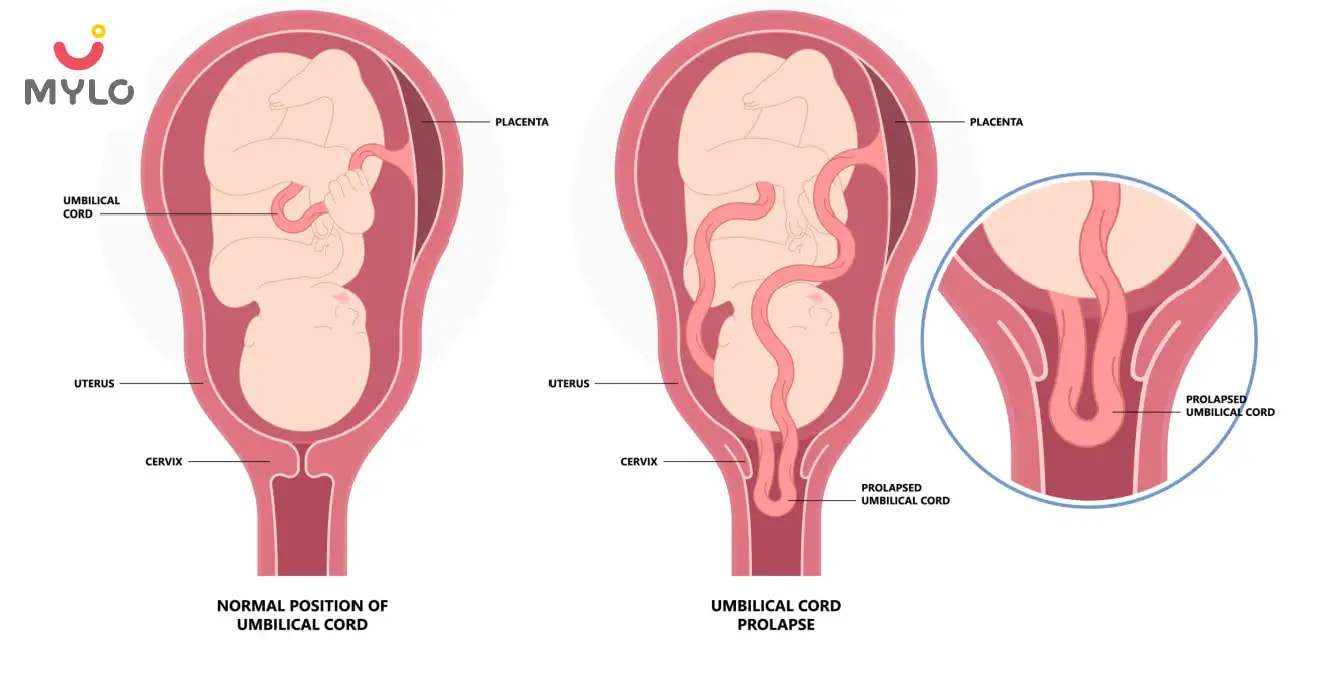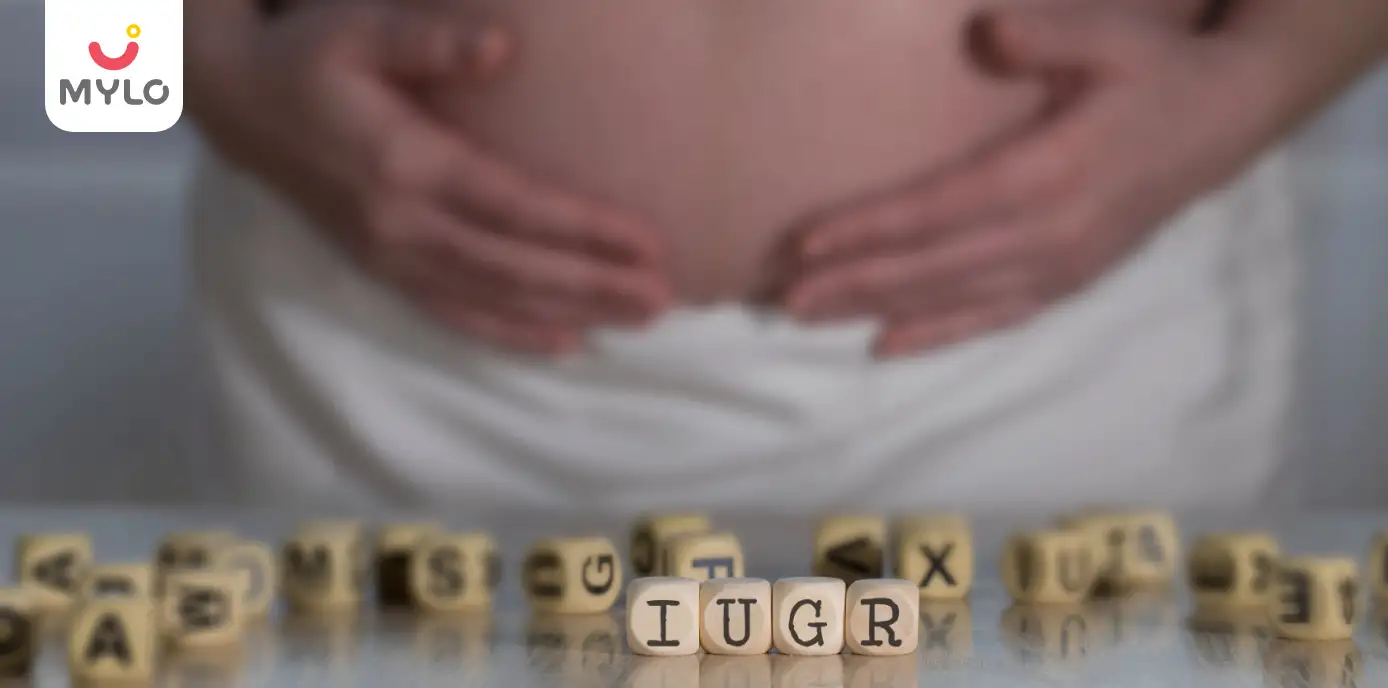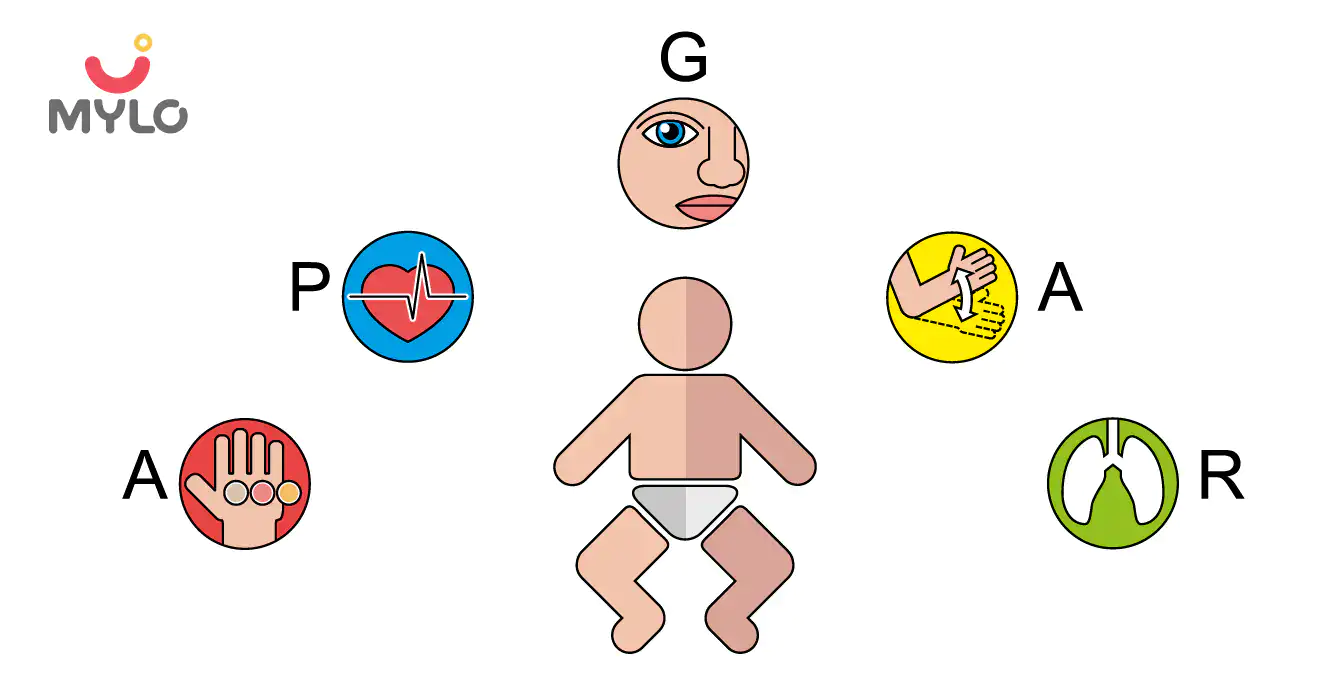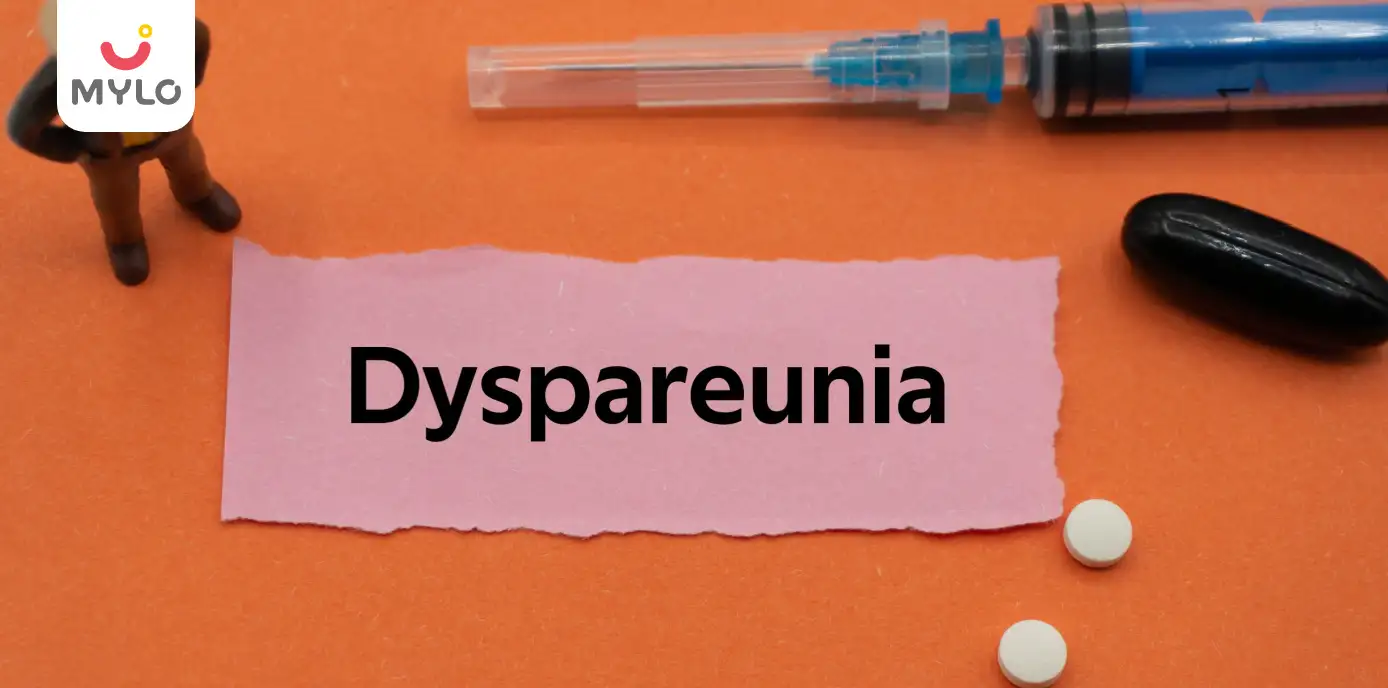Home

Umbilical Cord Complications

Umbilical Cord Prolapse Causes, Symptoms & Treatment
In this Article

Umbilical Cord Complications
Umbilical Cord Prolapse Causes, Symptoms & Treatment
Updated on 6 May 2023
When a baby is born, the mother typically delivers the head first, the umbilical cord, and the placenta. On the other hand, not all deliveries occur consecutively. In rare cases, the baby doesn't come out first or is in the wrong position. Umbilical cord prolapse is one of these conditions that can make the baby very uncomfortable.
Unlike umbilical hernia in pregnancy which is usually harmless and takes care of itself during the course of your pregnancy, umbilical cord prolapse is a more serious condition which shows up during delivery! This article will talk about everything that you need to know about umbilical cord prolapse.
What Is Umbilical Cord Prolapse?
During pregnancy, the fetus is attached to the mother by a flexible tube-like tissue called the umbilical cord. The connection between mother and child begins at the umbilical cord. It gives the baby the nutrients it needs and gets rid of waste products from its metabolism. Two arteries and a vein make up the system's three blood vessels.
It is called an umbilical cord prolapse when the baby's umbilical cord is delivered before the baby's head. As the baby attempts to escape, it brushes up against the umbilical cord, cutting off oxygen and blood flow. In such a situation, the baby must be born as soon as possible to avoid any complications.
There are two types of umbilical cord prolapse: overt, in which the cord protrudes in front of the baby, and occult, in which the cord slides along the baby's belly. Both of these conditions put the newborn at risk because of limited blood flow to the umbilical cord.
Causes of Umbilical Cord Prolapse?
A variety of factors may play a role in the causes of cord prolapse. Umbilical cord prolapse can occur for several different reasons, including,
1. Premature Rupture Of the Membranes (PROM):
Due to the baby's head being so far up in the uterus, the cord may pass through the cervix before the membranes break if they are ruptured prematurely or artificially. Umbilical cords typically become squeezed as the infant follows.
2. Delivering multiple babies:
The first baby to emerge from a mother who is carrying multiples may be the one to force the umbilical cord out.
3. Excessive amniotic fluid:
Polyhydramnios is a disease in which an abnormally high volume of amniotic fluid can cause the umbilical cord to be forced out of the birth canal.
4. A breech position:
The umbilical cord may have enough room to pass through the birth canal if the baby is born feet first in a breech position in the uterus.
5. Abnormal length of the umbilical cord:
Umbilical cords that are abnormally lengthy could be a risk factor for prolapse.
6. Premature Delivery:
A slipping umbilical cord may result from a combination of a smaller fetus and the increased volume of amniotic fluid.
Symptoms Of Umbilical Cord Prolapse
Some apparent cord prolapse signs and symptoms include:
-
Whether or not the doctor sees or feels the umbilical cord while delivering the baby.
-
If the unborn child is suffering from an oxygen deficiency.
-
If the fetal heart rate drops significantly and stays low for an extended period of time.
How Is Cord Prolapse Diagnosed?
Some typical approaches to the diagnosis of cord prolapse are as follows:
-
At the moment of delivery, a vaginal examination is used to diagnose an apparent umbilical cord prolapse, in which the chord protrudes externally from the vagina.
-
It can be challenging to detect an occult umbilical cord prolapse, which occurs when the chord is pushed out together with the infant. Doppler ultrasound imaging, on the other hand, is utilised. As a result, the delivery could be pushed back even further, which could be dangerous for the infant. When a drop in the foetal heart rate is detected, doctors will opt for a C-section delivery. Cases of foetal bradycardia with no apparent cause may be attributable to occult umbilical cord prolapse.
Treatment For Umbilical Cord Prolapse
Umbilical cord prolapse treatment can involve the following steps:
-
Faster delivery
-
Indications for an immediate emergency cesarean section
-
Providing the mother with oxygen.
-
Changing the positions of the mother.
-
Aiding the mother in taking medication to lessen the intensity of labor contractions.
-
An amnioinfusion is performed when amniotic fluid levels are low, which might cause cord compression.
Umbilical Cord Prolapse: Is It Preventable?
The following must be avoided in order to reduce the potential dangers of nursing procedures for a prolapsed umbilical cord:
-
Intentional or unintentional membrane rupture during cervical exams.
-
Setting the groundwork by breaking the water.
-
Discuss the potential side effects of induction procedures with your doctor if you find yourself in a position where you need to induce labor. Consider a C-section if you want to err on the side of caution.
-
It's essential to plan ahead for potential complications during birth if you have a disease like polyhydramnios.
Conclusion
An umbilical cord prolapse is an extremely unusual but potentially life-threatening complication during pregnancy. You must also pay attention if the cord is an infected umbilical cord. It is impossible to stop an umbilical cord prolapse from happening, but being prepared for it by being aware of the risk, knowing what to do to aid yourself and your baby, and understanding what to expect can make the experience much less distressing.



Written by
Khushboo Jain
Get baby's diet chart, and growth tips

Related Articles
Related Questions
Influenza and boostrix injection kisiko laga hai kya 8 month pregnancy me and q lagta hai ye plz reply me

Hai.... My last period was in feb 24. I tested in 40 th day morning 3:30 .. That is faint line .. I conculed mylo thz app also.... And I asked tha dr wait for 3 to 5 days ... Im also waiting ... Then I test today 4:15 test is sooooo faint ... And I feel in ma body no pregnancy symptoms. What can I do .

Baby kicks KB Marta hai Plz tell mi

PCOD kya hota hai

How to detect pcos

RECENTLY PUBLISHED ARTICLES
our most recent articles

Symptoms & Illnesses
Bipolar Disorder: Causes, Symptoms, Risks & Treatment

Illnesses & Infections
Sinus Infection During Pregnancy Causes & Treatment

Growth & Development
Intrauterine Growth Restriction (IUGR) in Pregnancy

Growth & Development
APGAR Score: Meaning & How it is Performed

Love, Sex & Relationships
Dyspareunia (Painful Intercourse): Causes & Treatment

Infections in New Mom
Short Bowel Syndrome: Causes, Symptoms, and Treatment
- Pelvic Inflammatory Disease (PID): Symptoms, Causes & Treatment
- Lightning Crotch in Pregnancy: All You Need to Know
- Vaginal Dilator: Learn its Types & How To Use It?
- Infected Umbilical Cord: Symptoms, Treatment And Prevention
- Is Hair Fall Normal in Pregnancy
- Syphilis: Symptoms, Causes, Risks & Treatment
- Congenital Heart Disease: Symptoms, Causes & Treatment
- Fetal Echo Test in Pregnancy: A Diagnostic Tool for Detecting Heart Defects in the Womb
- Bedwetting (Nocturnal Enuresis): Causes, Symptoms & Treatment
- Birthmark: Types, Causes, Risks & Treatment
- Behaviour Therapy: Benefits, Types & Techniques
- How Long Does Breast Milk Last at Room Temperature?
- Thrush: Causes, Symptoms, Treatment, and More
- Childhood Asthma: Symptoms, Causes & Treatment


AWARDS AND RECOGNITION

Mylo wins Forbes D2C Disruptor award

Mylo wins The Economic Times Promising Brands 2022
AS SEEN IN
















- Mylo Care: Effective and science-backed personal care and wellness solutions for a joyful you.
- Mylo Baby: Science-backed, gentle and effective personal care & hygiene range for your little one.
- Mylo Community: Trusted and empathetic community of 10mn+ parents and experts.
Product Categories
baby carrier | baby soap | baby wipes | stretch marks cream | baby cream | baby shampoo | baby massage oil | baby hair oil | stretch marks oil | baby body wash | baby powder | baby lotion | diaper rash cream | newborn diapers | teether | baby kajal | baby diapers | cloth diapers |








